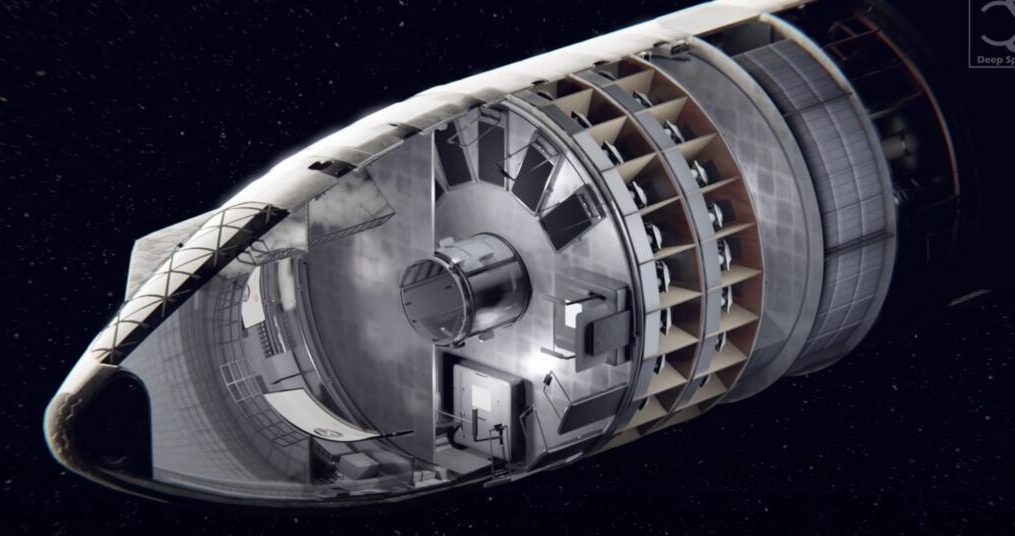Living Inside SpaceX Starship Space Stations Versus Submarines
There is some debate on how many people could fit inside SpaceX Starships that are converted into Space Stations. We can get a better maximum estimate by looking at the Apollo mission and German and American submarines.
Apollo’s Command Module had a diameter of 12.8 feet (3.9 meters) and a height of 11.4 feet (3.47 meters). Total dry weight was 12,787 pounds (5,800 kg) and its crew cabin volume was 218 cubic feet (6.17 cubic meters). This held three astronauts for about one week. If one were to pack Astronauts with Apollo standards then 400 could fit into the 1000 cubic meters of the SpaceX Starship. Tripling the space given for each Starship Astronaut would still leave room for 150.
Type VII U-boats were the most common type of German World War II U-boat. They were notorious for being cramped. They had about 800 cubic meters of volume and a lot of the space was for torpedos, fuel and engines. They could hold a crew of about 52.
The current crew capacity permitted on the International Space Station is limited to how many can be evacuated in the event of a disaster. A SpaceX Starship space station can have high capacity Starships for evacuation. 500-1000 people could be packed in like people on a passenger plane.
There is a Youtuber channel called Common Sense Skeptic who criticizes (or debunks) claims that the Starship could hold 100 people on a trip to Mars. This is different question than how many can be in an Earth orbiting Starship. The Skeptic makes a big deal calculating the food and water needed for a 9 month trip.
Space Missions to Mars up to now have been small satellites where the entire mission was launched from Earth. The delta-V has been about 3.2 to 3.5 kilometers per second. An hyperbolic orbit depending on aerocapture for braking can reduce this to 90-150 days depending on the year of travel. For example in aug. 2020 for a delta-V of 4.8 km/s Mars could be reached in 96 days according to the Trajectory Browser
By refueling the SpaceX Starship in orbit and assembling a few stages in high orbit, a large chemically powered space mission can get up around 9.0 kilometer per second delta-V.

The new Raptor version 3 engines could enable the Super Heavy Starship to lift 300 tons into orbit. The Starship would be fully refueled in orbit before going to Mars. The 300 ton capacity for a Mars trip, perhaps double the internal volume and a shorter travel time of 90-100 days would totally invalidate the Common Sense Skeptic analysis. Multiple SpaceX Starships can be used for the Mars mission. They could dock and share their living space.
Crewmembers could be sedated and placed into a Topor state. This would reduce the amount of food and water needed.

The Ohio class US submarine has about 18000 cubic feet of volume and has a crew of 160. They are designed to go underwater for months.


Brian Wang is a Futurist Thought Leader and a popular Science blogger with 1 million readers per month. His blog Nextbigfuture.com is ranked #1 Science News Blog. It covers many disruptive technology and trends including Space, Robotics, Artificial Intelligence, Medicine, Anti-aging Biotechnology, and Nanotechnology.
Known for identifying cutting edge technologies, he is currently a Co-Founder of a startup and fundraiser for high potential early-stage companies. He is the Head of Research for Allocations for deep technology investments and an Angel Investor at Space Angels.
A frequent speaker at corporations, he has been a TEDx speaker, a Singularity University speaker and guest at numerous interviews for radio and podcasts. He is open to public speaking and advising engagements.
